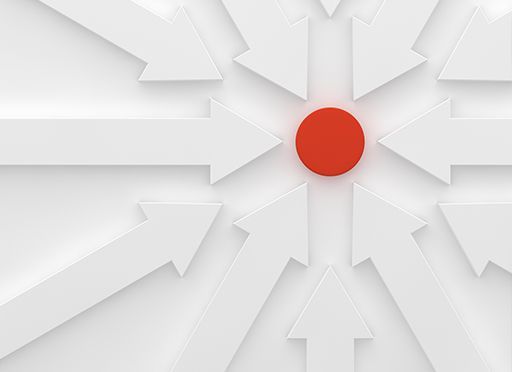Bestseller Simon Sinek collaborates with David Mead and Peter Docker to detail an enlightening – sometimes difficult – journey of personal and organizational discovery.

How And Why
Simon Sinek co-wrote this companion to his earlier book Start with Why with consultants David Mead and Peter Docker. The authors’ guidance goes beyond the personal; their advice shines when they describe the process of discovering your “Why” and delving into your company’s “Tribal Why.”
Each of us has only one Why. It’s not a statement about who we aspire to be; it expresses who we are when we are at our natural best.
Simon Sinek, David Mead and Peter Docker
Sustainable, successful organizations communicate a shared purpose. Their employees can articulate the company’s vision, values, and the impact of its work on the firm and its stakeholders. The Tribal Why process provides everything you need to run a Why session for your team or organization, so you can create clarify your purpose and facilitate team bonding.
This manual is for leaders who want to engage their teams and discover shared missions and for anyone seeking further understanding of his or her purpose, ambitions and life goals.
Meaningful and Fulfilling
Sinek, Mead and Docker’s personal and organizational Whys arise from their belief that everyone and every company should enjoy purposeful, meaningful work. Fulfilling work fuels employee motivation and organizational success.
Every single one of us is entitled to feel fulfilled by the work we do, to wake up feeling inspired to go to work, to feel safe when we’re there and to return home with a sense that we contributed to something larger than ourselves. Simon Sinek, David Mead and Peter Docker
The authors advise you not to confuse fulfillment with happiness, which you might feel after you reach a goal, make a sale or get a raise. Happiness, sadly, comes and goes. When you align your work with your purpose – your Why – you experience lasting, consistent fulfillment. Now, they say, you can identify and embrace the elements of your work that fulfill you.
Your Personal Why
To find your Why, the authors suggest telling stories about formative events in your life, documenting them, and finding their common threads and themes. Write down how you felt at the time and why you did what you did. Whittle those down to the most important or inspirational five or six stories.
Your Why is born from your past experiences; it is the sum total of the lessons you learned, the experiences you had and the values you adopted while growing up. Simon Sinek, David Mead and Peter Docker
Find the patterns that give you insights into what drives you or your team. The most critical, crucial theme will stand out and provide your Why. When you identify it, write it down. State it in a way that is straightforward, concise and positive.
Sinek, Mead and Docker caution you not to follow this process by yourself. In their experience, no one can find his or her true Why alone. Enlist a trusted person to listen to your stories and ask you probing questions.
Remembering and sharing your emotions enables you to understand what made you choose a particular life experience as one of your formative stories.
Challenges
The authors acknowledge that finding and talking about your stories isn’t easy. They suggest jogging your memory by thinking about the people who influenced you most.
Each of us has only one Why. It’s not a statement about who we aspire to be; it expresses who we are when we are at our natural best. Simon Sinek, David Mead and Peter Docker
Think about a time when you loved your work so much that you’d have done it without pay and compare it to a time when your work felt wretched. Think about seminal events in your life, how you helped others and when you were most proud of an accomplishment.
Themes and Patterns
Let your storytelling partner distill your stories into threads, patterns and themes. Work together to identify the most important themes that inspire you or represent you accurately.
Happy memories and sad memories, tales of opportunity and hardship, all offer a chance to learn about who someone is and how they became who they are. All roads lead to Why. Simon Sinek, David Mead and Peter Docker
Narrow these down to one theme that represents what you do – your “contribution theme” – and another that describes the effect of what you do – your “impact theme.”
Your Why Statement
Your Why statement says you want to contribute to an identified purpose in order to achieve a specified goal. Your purpose is your contribution theme, and your goal is your impact theme.
Connect your personal Why with your professional Why. Find a professional facilitator to function the way your partner did, but with a group. Recruit 10 to 30 diverse participants who care about your team and your organization.
The facilitator should tell a Why story from his or her life. Participants then should share stories about what attracted them to the firm, what keeps them there and how crucial moments in their stories affected others. Together, they should draft a Why statement everyone agrees to.
When a company has a strong Why, it inspires trust and loyalty in its customers, clients, employees and supporters. Simon Sinek, David Mead and Peter Docker
Recognize people when their actions and behaviors exemplify your organization’s Why. Funnel decisions through the lens of that Why and talk about it regularly.
Your How
The authors found that the factor that differentiates you from other people is How you live your Why. To identify your Hows, consider what you like and what you do well. Knowing your Hows helps you identify opportunities to succeed. Organizations, jobs and projects that are compatible with your Hows will align with your interests and values and enable you to “live your Why.”
Your Hows are the ingredients you need to be at your best. Together, they are your recipe for success – your strengths. And this is true for both an individual and a tribe. Simon Sinek, David Mead and Peter Docker
Your Hows describe what you are doing to fulfill your Why. Hows put your values into actions. For example, being honest is a value; telling the truth is a How.
Your Organizational Why
Share your Why statement. For example, when customers ask you what you do, tell them why you do it. Schedule a session with people from your team or organization who didn’t take part in the Why discovery process. Explain the Why to them, and read the Why statement. Have them discuss whether and how the Why statement resonates and how the organization can implement it.
“Keep your Why alive.”
Sinek, Mead and Docker point out that many companies do well for a while and may even lead their industries, but then somehow lose their way.
If we want to feel an undying passion for our work, if we want to feel we are contributing to something bigger than ourselves, we all need to know our Why. Simon Sinek, David Mead and Peter Docker
As your company grows, you may forget to indoctrinate new employees in your values, your culture and your Why. To avoid that mistake, always discuss and celebrate your Why.
No Nonsense
The authors offer a method that will facilitate intimate and relationship-strengthening conversations in your private life and at work. Their method nourishes teamwork and open sharing. They write in a short, sharp style that reflects their many hours of teaching clients. This hard-earned distillation makes their approach easy to understand and the components of it easy to retain.
We don’t have a professional Why and personal Why. We are who we are wherever we are. Simon Sinek, David Mead and Peter Docker
Sinek, Mead and Docker prove remarkably devoid of nonsense, and their book features no padding or pontification. Amid a bottomless plethora of personal and corporate self-help books, this stands out for its commonsense melding of New Age personal growth tactics and sound corporate identity-making, presented in a clear, achievable step-by-step process.
Simon Sinek also wrote Start with Why, which is the subject of his very popular companion TED Talk. His other books include Leaders Eat Last and The Infinite Game. Peter Docker also wrote Leading From the Jumpseat.







